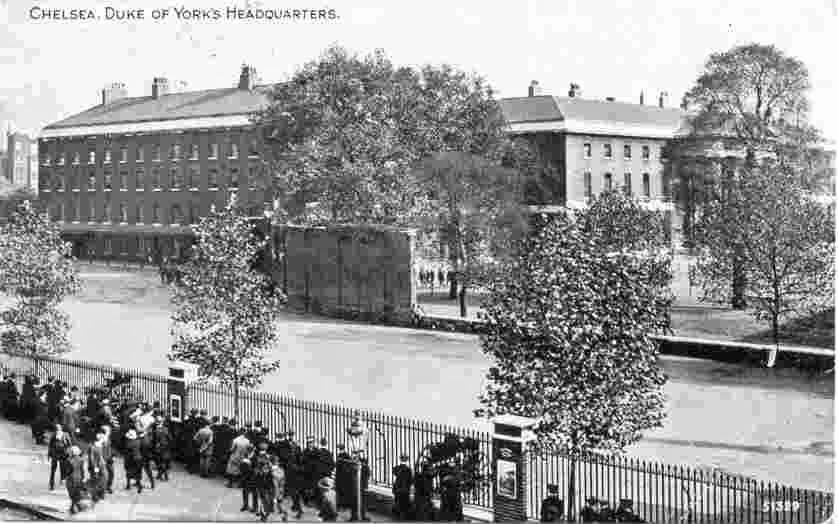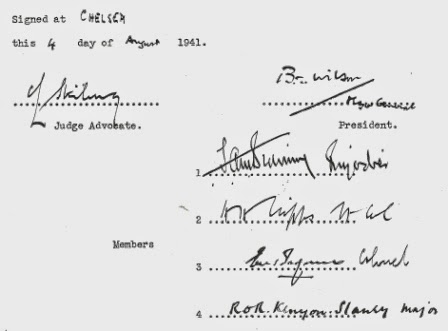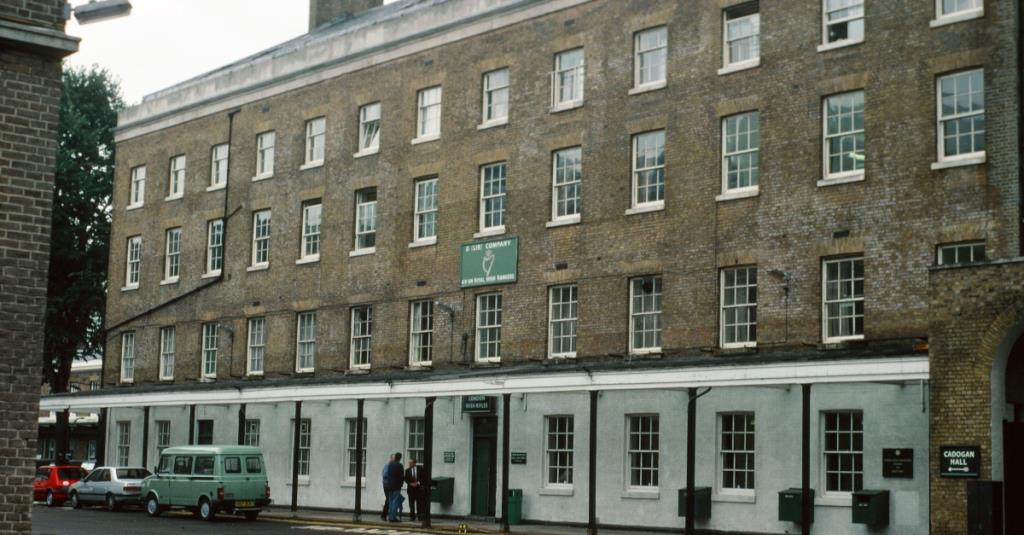In early August, after weeks of preparation, the wheels of the British military establishment finally turned to Josef’s court martial. The trial took place on 4 and 5 August, 1941, at the Duke of York’s Headquarters, the halls of which bustled with decorated soldiers and bewigged lawyers.

The court martial tribunal was made up of one President, five sitting Members and two waiting members. The Waiting Members were generally not required but were available in case anything should befall one of the Members or if the accused objected to a Member. In Josef’s case, the tribunal was composed of:
President
Major-General B.T. Wilson, C.B., D.S.O.
Members
Brigadier F.A.M. Browning, D.S.O., Commander 24th (Guards) Independent Brigade Group
Col. E.W.S. Balfour, D.S.O., O.B.E., M.C., Commanding Scots Guards
Lt. Col. H.H. Cripps, D.S.O., Officer Commanding, Infantry Training Centre, Royal Fusiliers
Major R.O.R. Kenyon-Slaney, Grenadier Guards
Waiting Members
Lt. Col. E.D. Mackenzie, C.M.G., C.V.O., D.S.O., Officer Commanding, Holding Battalion, Scots Guards
Major R.C. Alexander, Irish Guards

In addition to these accomoplished soldiers, there were a few men from the legal profession. While the President was in charge of the court martial, the Judge Advocate was there to ensure that the proper legal procedures were followed. Naturally there was an Attorney for the Prosecution as well as an Attorney for the Defence. In Josef’s case, the following filled those roles:
Judge Advocate
C.L. Stirling, Esq, Deputy Judge Advocate General
Attorney for the Prosecution
Major A.A.H. Marlowe, Judge Advocate General’s Office
Attorney for the Defence
Captain E.V.E. White, Barrister-at-Law
Finally, there was an Interpreter and a Shorthand Writer.
Interpreter
Lieutenant W.J. Thomas, Intelligence Corps
Shorthand Writer
7653216 Quartermaster Sergeant B.A. Balment, R.A.O.C.
Perhaps it’s just me, but this long list of names is rather meaningless. Ranks, Surnames, Awards, Commands – but little else. I want to know something of these men who decided the fate of Josef Jakobs. I want to meet these men in at least some fashion. With a bit of tenacity, most have background stories that can be teased out of the dusty backrooms of history.
Header image – Duke of York’s headquarters – copyright 1991 G.K. Jakobs.
